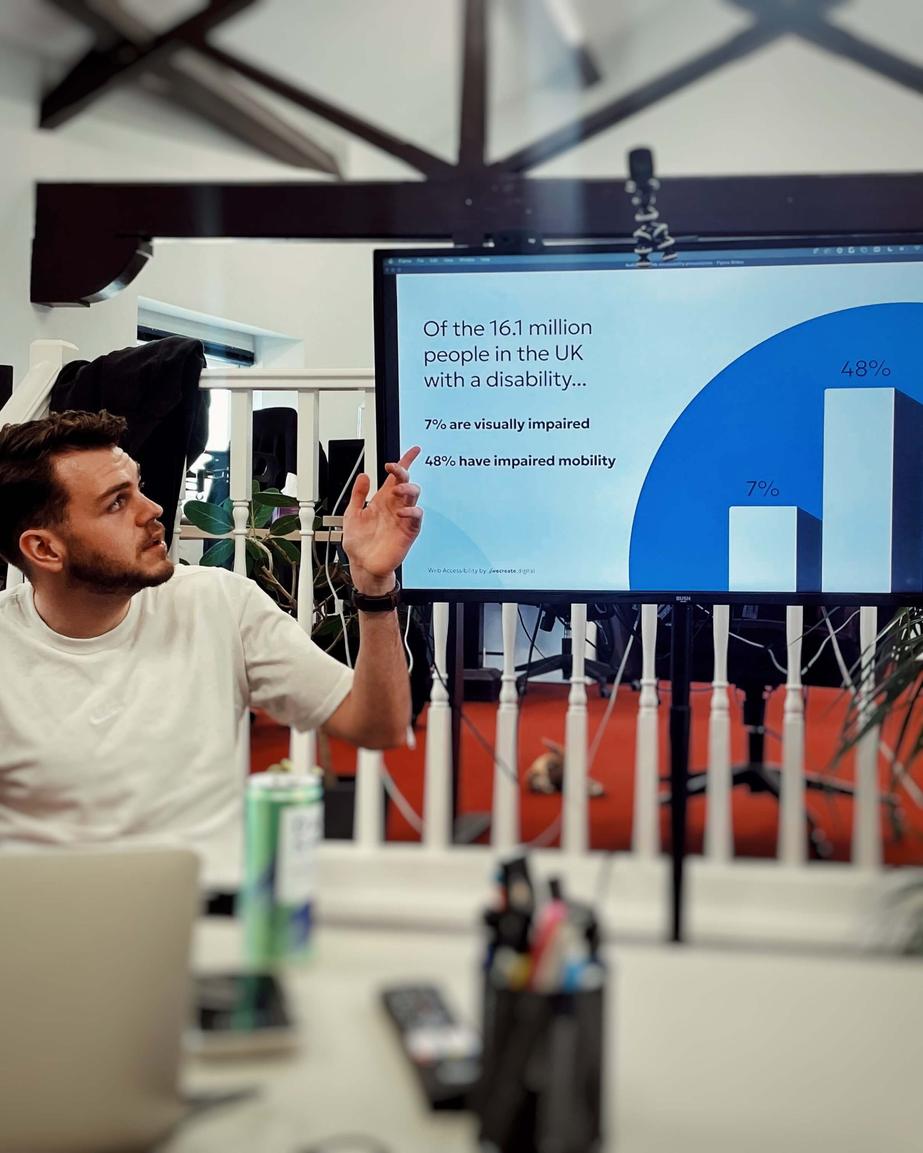What is digital accessibility? It means making websites and digital content usable for everyone, including people with disabilities.

Put simply, digital accessibility is the practice of designing and building digital content that can be used by everyone, including people with disabilities. This covers websites, mobile apps, documents, and any digital service. It ensures that content is perceivable, operable, understandable, and robust – these are the four core principles of the Web Content Accessibility Guidelines (WCAG).
For example, this might mean ensuring text has enough contrast against its background, images have meaningful alt text, and websites work with screen readers or can be navigated entirely by keyboard. It also includes avoiding features like auto-playing audio or flashing animations that could create barriers.
Accessibility isn’t just for permanent disabilities. It also benefits people with temporary conditions (like a broken arm), situational limitations (like bright sunlight or a noisy environment), or age-related impairments.
What is digital accessibility compliance?
Accessibility compliance refers to meeting recognised standards or legal requirements for making digital services accessible. In the UK, public sector websites are legally required to meet WCAG 2.1 Level AA – a set of specific criteria maintained by the W3C. This includes guidance on text readability, interactive elements, navigation, and multimedia content.
Other countries have their own frameworks, such as the ADA in the US or EN 301 549 in the EU. Compliance might be checked through accessibility audits, user testing, or public feedback. For many organisations, especially in the public sector, being compliant is not optional; it’s a legal obligation.
Why is digital accessibility important?
At its core, accessibility is about inclusion. Around one in four people in the UK have a disability, and making your website accessible means you’re not excluding them. It’s also good practice: accessible websites are typically easier for everyone to use, whether they’re navigating by keyboard, using a mobile on the go, or simply dealing with a temporary issue.
Beyond usability, accessibility supports search engine optimisation, improves performance, and reduces legal risk. Failing to meet accessibility standards can result in complaints or legal action, but even when it doesn’t, it reflects poorly on your organisation.
Ultimately, digital accessibility is part of building a web that works for everyone. It shows that you take your users seriously and want your services to be open, fair, and usable – for all.





